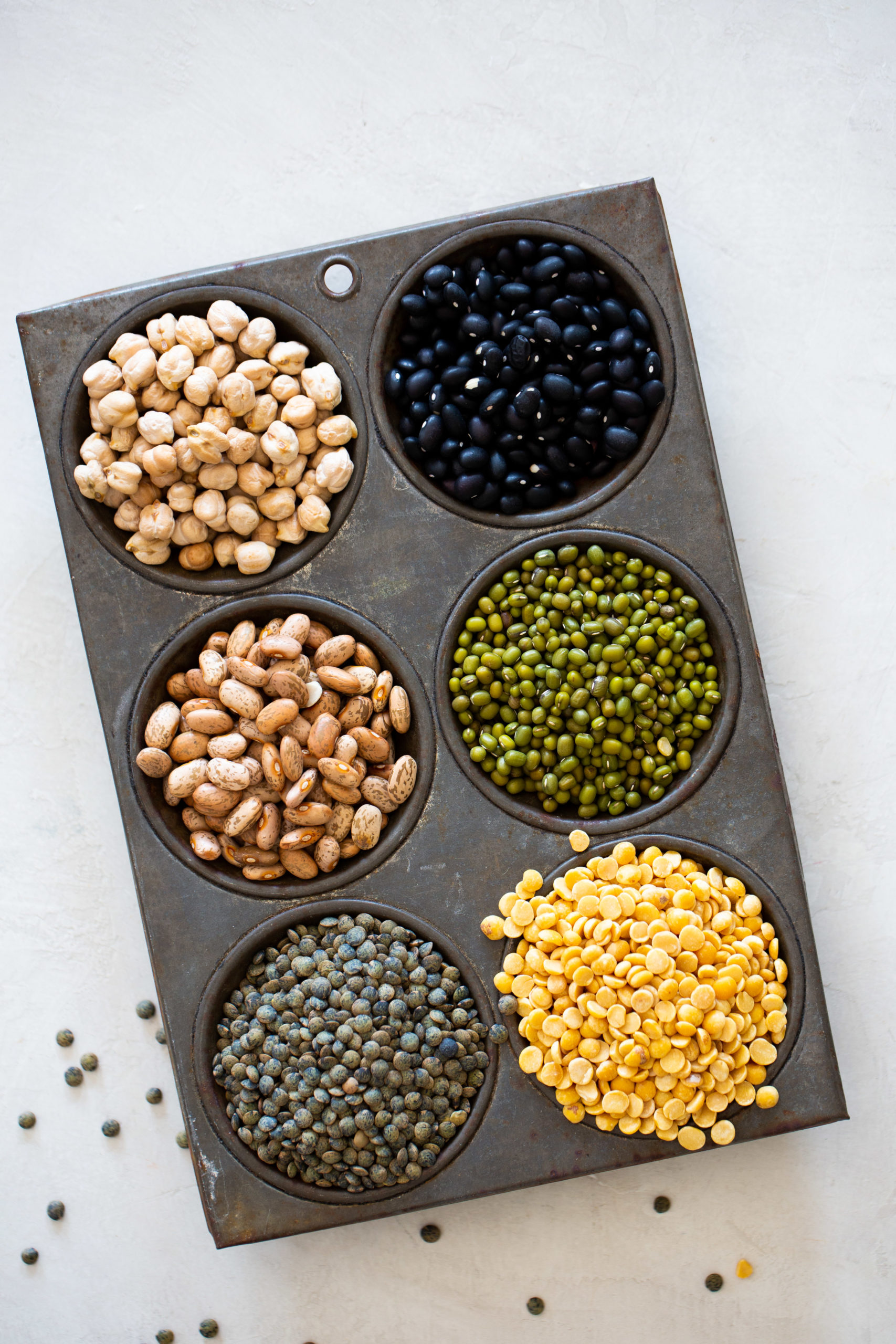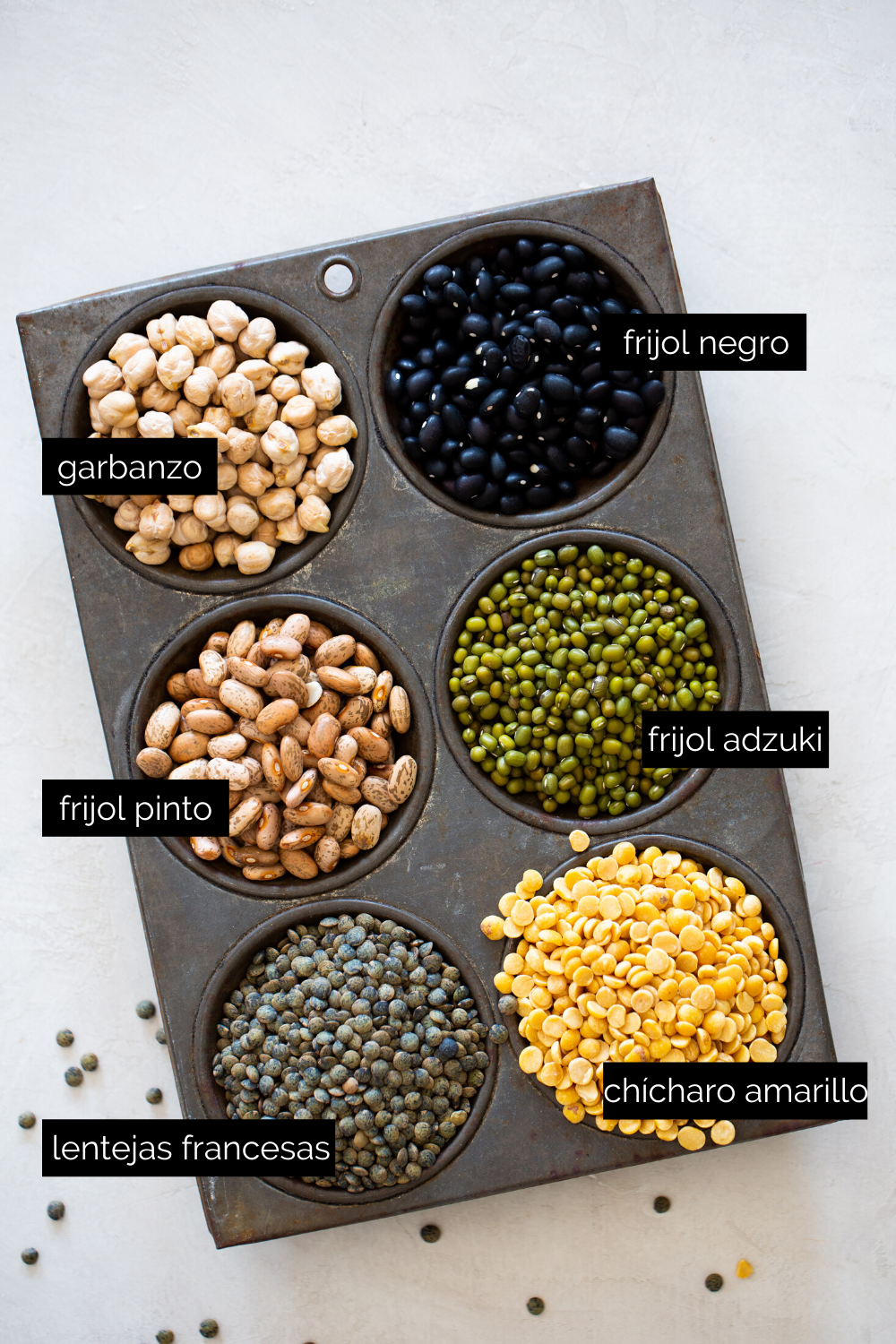
About this post
In this post, I’ll share various ideas for cooking beans, lentils, peas, and chickpeas. With this guide, you’ll be able to prepare these legumes at home and enjoy them as well.
As I often say, the best way to stay organized in the kitchen and have meals ready quickly is to keep a cooked grain and a legume in the fridge.
There are many different types of legumes around the world. Be sure to look for the best black beans, pinto beans, and bay beans, as well as a variety of lentils, chickpeas, and peas.
I continue to be amazed by the richness of beans in all their colors and their nutritional value, such as red and yellow lentils. Have you ever tried yellow split peas?There are many different types of legumes in the world. Look for the best black beans you can find, the best pinto beans, bay beans, etc. Look for all types of lentils, chickpeas, and peas.
I promise that I never cease to be amazed at the richness of beans of all different colors and by how nutritious they are – red lentils, yellow lentils, etc. And are you familiar with yellow split peas?

And if you have some grains and lentils already cooked, you can pull a meal together super quickly. If you already have black beans ready, you can make sweet potato and black bean tacos, bean soup, or Mexican rice and bean meatballs.
If you have lentils ready, you can make red enchiladas, a meatball sandwich with tomato sauce, a vegan ragu, or a lentil loaf in half the time it takes to start cooking your meal from scratch.
| Legume | Quantity | Soak | Cooking time (after soaking) | Yield |
| lentils | 1 cup | – | 30 min. | 2 cups |
| beans (e.g., black, pinto, red) | 1 cup | overnight | 60 min. | 3 cups |
| chickpeas | 1 cup | overnight | 90 min. | 3 cups |
| cannellini beans | 1 cup | overnight | 50 min. | 3 cups |
| peas | 1 cup | – | 30 min. | 2 cups |
| broad beans | 1 cup | overnight | 60 min. | 3 cups |
This is a small table that essentially tells you how to cook lentils. Some say it’s better to soak them, and others say you don’t need to soak at all. I’ll explain them one by one.
HOW TO COOK BEANS
There are three basic ways to cook beans. The cooking times can vary depending on whether or not you soaked the beans the night before. Sometimes I wash them, and sometimes I don’t.
Stovetop Method: This is the most traditional and easiest method. For each cup of beans, add 4 cups of water. If you soak your beans overnight, they’ll cook faster, typically taking about 1½ hours. Keep an eye on them to ensure the water doesn’t boil too aggressively, as this can cause the beans to break open. Beans are done when you can easily mash them with a fork. You can add herbs or aromatics like garlic or onion to enhance the flavor, but I prefer to keep them simple.
Pressure Cooker Method: Using a pressure cooker is a great way to speed up the process. But be sure not to fill it more than two-thirds to avoid clogging the steam valve. Start by cooking beans for 30 minutes, then allow the pressure to release naturally for 15–20 minutes. This method is much quicker than stovetop cooking; beans are tender and perfect.
Instant Pot / Slow Cooker: My favorite method is using an Instant Pot (affiliate link) or a slow cooker. The Instant Pot cooks beans in about 20 minutes with just a 15-minute natural pressure release, while the slow cooker takes a few hours but requires zero attention. The beans turn out consistently soft and flavorful every time!
✎TIP: Chickpeas are cooked in the same way as beans.
HOW TO COOK LENTILS
Just like beans, there are many different types of lentils. There are red lentils, yellow lentils, beluga lentils, French lentils, and Puy lentils, among others. They are all delicious and have many benefits.
Lentils are one of the fastest legumes to cook, and there’s no need to soak them. The method you use depends on the type of lentil you have:
- Red & Yellow Lentils: These lentils break down and become mushy as they cook, making them perfect for soups and stews. For every 1 cup of lentils, use 2½ cups of water and cook for about 20 minutes on the stovetop.
- Green & Brown Lentils: These lentils hold their shape, making them ideal for salads and other dishes where you want distinct lentil pieces. For every 1 cup, use 2½ cups of water and cook for about 30 minutes.
You can add seasonings like salt, garlic, onion, and herbs to enhance the flavor, but like beans, they can also be cooked plain for versatility.
✎TIP Peas can be cooked just like the lentils. It’s best to cook them on the stovetop, but if you don’t mind them falling apart, then you can use a pressure cooker or an InstantPot. Just like lentils, they can maintain their shape depending on the cooking time. This split pea soup only has three ingredients and is so, so good.
How to Cook Chickpeas
Chickpeas are hearty, versatile, and packed with protein. They do require a bit more time than lentils, but the flavor and texture are worth it. Unlike lentils, chickpeas do need to be soaked.
Soak first: Place dried chickpeas in a large bowl and cover with plenty of water. Let them soak overnight or for at least 8 hours—they’ll double in size. Drain and rinse before cooking.
Stovetop:
Add soaked chickpeas to a large pot and cover with fresh water (about 3–4 inches above the chickpeas). Bring to a boil, then lower to a simmer. Cook for 60–90 minutes, until they’re tender and creamy. Skim off any foam that rises to the top.
Optional: Add aromatics like bay leaf, onion, or garlic for extra flavor.
Instant Pot:
No soaking needed! Combine 1 cup dried chickpeas with 3 cups water. Pressure cook on High for 35–40 minutes, then allow a natural pressure release for 15 minutes.
Slow Cooker:
Add soaked chickpeas to the slow cooker and cover with water. Cook on Low for 6–8 hours or High for 3–4 hours, until soft.
Tip: Don’t add salt until after cooking—this helps the chickpeas stay tender. Store in the fridge for up to 5 days, or freeze for future meals.
Information source: “The Good Essential Good Food Guide” by Margaret M. Wittenberg.
